How to Promote High Performance Shingle Technology - PODCAST TRANSCRIPT
May 8, 2025 at 12:00 p.m.Editor's note: The following is the transcript of a live interview with Jon Abernathy and Fallon Anawalt of TAMKO . You can read the interview below, listen to the podcast or watch the recording.
Intro: Hello. My name is Heidi Ellsworth and I am with RoofersCoffeeShop. And we are here today for this RLW to learn about performance products and how to sell performance to homeowners. So of course we needed to bring the experts in the field when it comes to that and that's our friends from TAMKO.
Before we get started with this great topic, I want to just remind everybody that this is being recorded and will be available on-demand within 24 to 48 hours. Please share this. This is the kind of information that can take yourselves out of the roof. This is the kind of things that really make that difference when you're talking about an upsell and really helping homeowners and building owners understand performance, because what it's all about in these extreme weather times. So be sure to get this, share it and share it within your company and within the industry overall. Also, we have the chat open, so please, we want your comments, where you're from, what you're doing, what you think, what questions you have. We'll have the chat open throughout the entire RLW. So let's get started. First of all, I would love to introduce our experts today. I'm very excited to have Jon Abernathy here from TAMKO. Jon, welcome.
Jon Abernathy: Thank you. We're happy to be here. We're excited.
Heidi J. Ellsworth: I know, I'm excited. I love this topic. I think it's so important. Let's start with, can you introduce yourself and tell us a little bit about what you do with TAMKO?
Jon Abernathy: Yeah. So I'm the director of contractor engagement here at TAMKO. I cover the whole US out of corporate. And just my job is basically just working on the educational platform for contractors, continuing to advance our vision for contractors with our edge program and events and things like that. Just educating and bringing value, right? That's the idea.
Heidi J. Ellsworth: Its one of the most important things manufacturers can do for the contractors is to really help them understand all the benefits in providing long-lasting roofs. So Jon, thank you. And I am also really excited to welcome Fallon Anawalt. Fallon has joined TAMKO in the last, I think six months and is bringing such great marketing information. Fallon, welcome and can you introduce yourself?
Fallon Anawalt: Yes, thank you so much. Thank you for having me. Just want to say I'm so excited to be a part of the webinar. Like she said, my name's Fallon. I'm the marketing director here at TAMKO. Obviously, some of my main priorities are bringing awareness to the TAMKO products as well as supporting Jon and providing the contractors what they need to be successful and materials about our product to help them sell to the homeowners and help them be successful. We have a great support system and we really, really are wanting to support our contractors as best as we can and help them sell the TAMKO product.
Heidi J. Ellsworth: Yeah. And so we've got the experts here, contractor relations, marketing, this is what it's all about. So let's get started and let's start with, first of all, I'm going to remind everybody again, the chat is open. Please say hello. Let us know where you're calling in from and also on if you have any questions as we go. This is an ongoing conversation, as all of our RLWs are. So okay, as we're looking at this, we want to really talk about what is performance. Now, that may seem like a simple question or a very straightforward question, but really things have changed so much in the industry and with our planet overall and the extreme weather we're seeing. So performance products are more important than ever. So Jon, start us out. What really makes for a performance product?
Jon Abernathy: So like you said, storms have ran rampant across America. The hell market even this year is starting to take shape. A lot of storms happening. We had major hurricanes in Florida last year. And a lot of your insurance companies are just making a demand for higher performance products to kind of mitigate their risk or their loss. And really the three things that matter the most is wind resistance, impact resistance, then we also have, as far as performance, is lower temperature install. So lot of your roofers in the north, they like to work a little extra into the winter, the fall. They have a real short season and so with our StormFighter FLEX product, it can be installed and fully warrantied to 25 degrees, which is pretty awesome.
Heidi J. Ellsworth: That's huge. That is really huge. And you know what, it seems like it goes hand in hand, Jon, right? When you're looking at wind resistance and impact rated performance, that goes hand in hand really with low temperature installation, because it's all about how the technology that is being used to manufacture these shingles. So maybe talk a little bit about what's that key ingredient that really goes into creating this performance? +9
Jon Abernathy: Well, we have our TriShield technology, which is basically, we've went in about five years ago and redefined our products for professional use. We have an upgraded asphalt, the polymer modified product. The Anchor Lock Layer, which is what has the fabric in it. Our fabrics kind of fuzzy compared to being woven, so it really goes in rebar almost into the common bond to help hold it support that shingle. Our preparatory sealants, like our sealants on the bottom of the shingle are different from the laminate. A lot of manufacturers, the same laminate that glues the shingle together and the same for their sealant and ours is proprietary and it's different and it actually is used as an actual sealant where whenever it hits 40, 60 degrees on the roof, it seals down. And then obviously, you could have granule adhesion, because granule adhesion, it kind of keeps the UV rays off the asphalt and keeps it performing well and not deteriorating.
Heidi J. Ellsworth: Yeah. We're talk about those technologies that's there, but really and that's kind of where I'm going with this, is when you're talking about a performance product it's just not one thing. It's how everything works together to really create that high-end performance.
Jon Abernathy: Yeah. Like I said, where you nail the shingle, where's ours is four nails, as long as your starter and hit bridge 160 mile per hour wind rated warranty. Obviously, where the nails go, you want to make sure that grabs. Ours pulls, I think the last independent test seems like 75 pounds. So it takes a lot to pull that thing off a roof. That's what you want, you don't want it to come off. And I think the number one thing is just the sealant. You want it to seal down. Because if something doesn't seal down, then it creates lift. When it creates lift, it breaks or bends or pull off. But all that technology works together. I was impressed in Florida with the hurricanes. Oh, my gosh, I was so impressed to hear after the hurricanes that a contractor was calling in saying, "Oh, my gosh, your shingle stayed on the roof."
And I had a big contractor from Florida up here a week ago and he was like, "Man, the brand I was using was all over the stinking road. It was everywhere. It was embarrassing. I'm a big contractor and homeowners are starting to ask questions, why is this shingle on the roof and why this one is not?" Used to, they didn't ask questions like that as much just because they had really low deductibles. If it would hail or if the wind would blow, they'd get a roof pretty cheap. Now it's costing them a lot of money, so there's a pain point. So the products that perform are becoming very important to homeowners, too.
Heidi J. Ellsworth: Yes.
Fallon Anawalt: Yes. And we're really excited at TAMKO to be able to help the contractors solve those problems and provide a product that can stay in place against winds up to 160 miles per hour and have the TriShield technology that provides that sealant technology to grip strong. And so we're happy to be able to share the technology and solve that problem for our contractors and homeowners.
Heidi J. Ellsworth: Yeah. And Fallon, as people are looking at this, what really makes it a performance product and like I said, we're going to kind of dive deep into that, but upfront, as the contractors who are listening to this are thinking about, how do I sell this to a homeowner? Why does it matter that I want a performance product? And I think to Jon's point, in past years, decades, it was just like, oh, it hailed. Get a new roof. That's not the case anymore.
Jon Abernathy: It used to not be as important. Like I said, it's getting more... As the industry shifts, we've seen more in the last 12 months, insurance companies shift to really high deductibles, which is super painful for homeowners. And then starting at year five, seven and nine actual cash value policies on older roofs. And so if your roof gets hit now, like I said, when a hailstorm hits, we just had one hit here last week, it's like getting hit from the side as a homeowner, wasn't something you're expecting. And then when you got to start paying 10, 12,000, $15,000 out of pocket to get your roof fixed, you kind of pay attention to what you're putting on the roof next. You don't want to do it again if you don't have to. So it's so important that... I feel like you're going to start seeing the homeowners go more towards products that perform well to kind of mitigate their risks, because the insurance companies aren't taking the risks they used to take when it comes to wind and hail.
Heidi J. Ellsworth: That's so true. And who wants the inconvenience? Let's just be honest about that from a homeowner. So yeah, as contractors are talking to them-
Jon Abernathy: I've never met anybody that's excited about buying a roof. I was in the roofing industry as a contractor for 23 years and I never had one customer that came in that was excited about having to buy a roof. It's just something that we don't want to do. Now you want to go buy a Lamborghini, you want to go buy a car? Fine. That's exciting. We'll be waiting until Saturday to do that. But it's not something that's flashy.
Heidi J. Ellsworth: Yeah. And you know your life is going to be inconvenienced a little bit during that time of the tear-off or the re-roof or whatever all goes into that. And so I think a lot of people are starting to understand that and see that more as we go forward. Let's talk a little bit about really, like I said, these technologies and how they're going. So Fallon, let's start with you. You and Jon, but let's start with you just kind of talking about some of these technologies and how they are really... We kind of talked about them a little bit high level just a minute ago, but dive deep on it's making a change in the industry, really making big change.
Fallon Anawalt: So I'm going to kind of give an overview and then I'm going to let Jon explain this. He does a really good job talking about the technology. But all of our products have the TriShield technology. And then as far as granules holding firm, sealant gripping strong, laminate maintains its integrity. And then when you move on to Titan, Titan has Anchor Lock technology, which is, that's the cutting edge technology to create a reinforced system and that's how we're able to help ensure your shingles stay firmly in place up to winds at 160 miles per hour. And then when you move on to FLEX, that has our ForceFX technology. And so FLEX is really our shingle with the most technology in it and that allows us to do the cold weather install, which solves a problem for the contractor and the homeowner that needs a roof now. And so it's really great to be able to have that ForceFX and be able to do the install. So I'll let Jon kind of explain how to dive in and sell this technology to homeowners. He does a really good job with that.
Jon Abernathy: You pretty well covered it. But yeah, when we came out with Titan, one of the things people don't know, I'll throw this in, as far as is that technology that we came out with Titan, we put back into Heritage. So the granular adhesion, the sealant on the bottom of the shingle to help it stay down, that went from Titan back into Heritage. Then when we developed Titan as kind of our flagship product, then we developed StormFighter FLEX, we took an added polymer modified asphalt to StormFighter FLEX. So that's one cool thing about our polymer modified shingle is if you take the PMA out of most our competitor's shingle, you don't have a shingle left. If you take it out of StormFighter FLEX, you have Titan left. So that's kind of a cool thing to know.
I mean, we actually still have a shingle, but that PMA, we have an SEBS modified asphalt instead of an SBS, which means that it's oxidized before it goes on a roof. You can't oxidize SBS because SBS has to be heated to a pretty high temperature to do that. So with the SEBS, it allowed us to heat it much higher, which oxidized the asphalt, which makes it, without getting too deep in the woods on it, it makes it look pretty on the roof long term. If a roof starts to oxidize day one on a roof a year later, it looks totally different. So ours stays the same because the asphalt's pretty oxidized. So it's pretty good for a homeowner.
Heidi J. Ellsworth: That is such an important point, for, Fallon, to your point, for the contractors to be talking to the homeowners, right? A lot of people think it's UV rays, it's other things that are causing a difference in appearance, but really it's oxide.
Jon Abernathy: Yeah, oxidation. And so ours is, like I said, we can heat it to up above 700 degrees and it oxidizes. And that's one of the cool things about StormFighter FLEX is it's going to look good two, three years from now. Yeah.
Heidi J. Ellsworth: That's huge. Because I really think these technologies maybe individually have been around the industry, but it really was TAMKO who looked at them and said, "We're going to put all of these into one and really talk about how they all meld together." And having been in the roofing industry for a while now, I can tell you this didn't used to be called technologies. This was like, oh, here's a new feature or benefit, right?
Jon Abernathy: Well, you learn over the years too, I think. And asphalt, everything over the years kind of advances. And back in the day, I think they thought asphalt, you pull it out of the ground, you throw it on, throw some granule and you have a shingle, right? Today we've realized there's different things in the asphalt. You have to blend it right. You know if you get too much of one thing, the asphalt lasts a long time, but the granule doesn't stick. If you don't have enough... You know what I'm saying? So you got everything's balanced.
Everything has to be tested daily to get the product to where it performs. And that's what's important to TAMKO, is everything we're doing gets tested daily to make sure we have all the components we need for performance in our products.
Heidi J. Ellsworth: Yeah. That quality control is so important. And I don't want to leave this without really talking a little bit about the Anchor Lock Layer. Because I think this is what, as Fallon said, gives you your wind resistance up to 160 miles per hour, which is so important. It also gives to the contractors a real sense of security, exactly where you're nailing, how it's working. That layer puts it together. Talk to just a little bit about that, Jon and just how the contractor can really know that it's helping their crews do a really premium performance installation and how that can be communicated to the homeowner.
Jon Abernathy: Yeah. So as a roofing contractor, you use a lot of different crews over the years and ours has an inch and a half wide nail line. A standard shingle's five eighths. That's become pretty important in the industry because people don't nail straight, they nail at an angle. I used to install shingles, I installed for several years and so they kind of round though. That's how the human hand works. So it's just kind of gives you peace of mind in an owner that the odds are those shingles are not going to be high nailed, they'll be nailed in the right spot.
And just obviously, if they're going to stay on the roof. Like I said, our fabric is different. There's other manufacturers it's a woven fabric, which means it doesn't bond with the asphalt. So you can literally grab it and pull it off the back of a shingle. Ours is bonded with our asphalt, so it makes it part of the product. It's a big difference. It's part of the reason I came to TAMKO. I mean, I loved the technology. Plus TAMKO actually brought a crew of contractors together to help design the Titan, which was pretty cool.
Heidi J. Ellsworth: That is really cool. Contractor-driven innovation.
Jon Abernathy: Contractor driven, yeah.
Heidi J. Ellsworth: Okay. Before we leave here, let's talk about ForceFX too, just into how important that is, especially with what we're seeing, not just with hail, but impact overall with everything. So that ForceFX technology, talk a little bit more about that, Jon.
Jon Abernathy: Okay. The ForceFX technology is basically just all the things that go into basically StormFighter FLEX. Your ForceFX is like your PMAs and all that that go into it. So like I said, it's really the same thing. It's the granule adhesion, it's the UV stuff that protects your asphalt, our top coating. We put a lot more coating on the top. Used to back in the day, the coating went on the bottom. There was a lot more coating. We realized that that wasn't beneficial. We kind of put that to the top of the shingle. So you got a lot more coating, a lot more protection. Really wrapped up in a nutshell.
Heidi J. Ellsworth: And Fallon, from a marketing standpoint, as you see these technologies and how advanced they are, what are you hearing from your contractors as they are talking? What are their questions and how are they talking to their customers about these technologies?
Fallon Anawalt: Great question. Obviously, they're talking about the technologies and letting them know as far as how it works with the cold weather install, as well as it allows it to be a class four level impact rating when we get to StormFighter FLEX. And so that's a very valuable thing to homeowners. There's some areas that require that in a shingle, depending on where you live. An overall online, we see great content by the TAMKO contractors promoting StormFighter FLEX and all the great benefits and all the great success stories that they're having with the product. So it's really exciting to see that, too. And that's just helping them elevate and promote their business as well. So we see great things in how they're using the product with the homeowners, what the homeowners are saying about the product and we are so glad that this product is helping contribute to their success.
Heidi J. Ellsworth: Yeah. Well, when you think of... Oh, go ahead, Jon.
Jon Abernathy: I think there's going to be a bigger push in the future to class four with insurance companies adapting. Class four gives you the greatest impact resistance. The polymer modified asphalt's been proven to perform better. So I think you'll start seeing a shift in the near future to class four products, even getting into the next level. It's been a lot of class three and some class four, now it's becoming, there's pull through demand for class four in the marketplace for sure.
Heidi J. Ellsworth: And that's going to be from the insurance companies, too.
Jon Abernathy: It does. Yep, that's right.
Heidi J. Ellsworth: Sometimes there's little discounts. You never know, you got to check with your insurance carrier, right? Yeah.
Jon Abernathy: You get really good discounts on class three and four. And I think you'll start to see that over time, those discounts push bigger towards the class four than the class three, in my opinion. In hail markets. In hail markets, let me put it that way.
Heidi J. Ellsworth: In hail markets. Okay. Speaking of which, in hail markets, let's talk about the extreme weather protection. Because we've been doing this for a while and we've seen the storms, the cycles, but this is almost yearly now. Like you said, you had hail last week. We're seeing straight line winds across the US. So this isn't just in certain areas anymore, this is kind of everywhere. We're going from the frigid cold to wind. So Jon, yes.
Jon Abernathy: Wind is everywhere, right? It's not just hurricanes, it's tornadoes, it's wind storms. In our markets been three times a week, it seems like lately a bunch of wind coming through. It's not any fun for a roofing contractor to go out and replace two shingles. Anybody on the call that's a contractor's going to agree with me on that. Nobody wants to do a repair. So that's one of the things I like about our products with the 160 mile per hour wind is I've had a few complaints over, "Hey, it's not that repairable." It's like, do you want a shingle that's really repairable or one that stays on the roof, right? So ours seal down really, really well. And so the idea is not to have to do those repairs, not to have shingles just blow off every time the wind blows. And that's what's important to not only a homeowner, but it really as a contractor. I mean, insurance companies don't replace roofs over a couple shingles blowing off. You don't make money repairing a shingle on a roof.
Heidi J. Ellsworth: No, right? And that's what we're seeing out there, Fallon, right? We're hearing from the contractors and from the insurance companies that their homeowners... I mean, homeowners are kind of like this, right in the middle with the insurance companies not changing how they're going to cover them, the risk, learning from their contractors. So when you are looking at a wind uplift of 160 miles per hour, some people may be like, "Ah, it'll never get that high." But we've been seeing it. It's crazy.
Fallon Anawalt: One great thing we have are some great case studies and white papers that we can provide to our contractors to help them walk through how Titan XT has performed in high wind environments. And I think it's a really compelling for homeowners to see that. And I think that's a really helpful tool to our contractors.
Heidi J. Ellsworth: Yeah, exactly. And really, I think as you're looking at this and you're really talking through it and we touched on this in the last slide, but I think it's well worth bringing back forward again and that's granule adhesion. I don't think people really realize how important the granules are for the long-term durability of a shingle of a roof, of an asphalt roof. So Jon, talk a little bit about how important that is. And I mean, I think in years, decades past, people just saw all these granules in their gutters and you don't want to see that.
Jon Abernathy: Nope. I mean, a lot of shingles and people don't understand, are made where there'll be a little granule overage. So when you install, there'll be some that come off. I remember that when I was a ripper, I was always, well, [inaudible 00:22:16], there's always going to be a few that come off, the ones that don't when you're making a shingle right. So it's okay to have a little bit right after an install for a little while, it isn't going to hurt anything. But to answer your question, it's the most important thing for longevity. If the granules come off prematurely off the shingle, it exposes the asphalt, then the UV comes in and eats the asphalt up. I mean, rain, ice, cold, freezing, all those things, especially UV rays though, just eats the asphalt up and it will cause premature failure of the product. So it's the most important thing about the shingle for longevity.
Heidi J. Ellsworth: Yeah. And when you think about it, I know a lot of people don't realize this, but I live in the Pacific Northwest and I am up in the mountains, so I have a lot of freeze thaw cycles. If that UV is hitting and then it's going through freeze thaw cycles, that is where you can start really losing the performance.
Jon Abernathy: Yep, you can. It'll over time fell quickly and then it starts exposing the fiberglass and then it starts leaking. So yeah, if the granules come off, if they don't stay on, you're going to have problems.
Heidi J. Ellsworth: Again, I'm going to kind of hit on this just because I think it's important. Part of really looking at this extreme weather protection and performance products is realizing that you are probably, if you think you're not, you probably are in an extreme weather zone. Because extreme weather could be, like we talked about, winds, straight line winds, everybody gets that, hail, rain, continuous rain, but also UV. So when you're looking at the shingles in the southwest, they're getting hit constantly with strong UV. So as people are looking at this, I think honestly in the past decades, contractors or homeowners may have been saying to the contractors, oh, we're in a mild climate, it's not going to be a big deal. But that has changed.
Jon Abernathy: Yeah, it has changed. And I was just thinking as you said that, there's a lot more resilient design products being manufactured on the market, right? So in the Midwest, where we're at, some days you wake up and it's 85 degrees and the next day it's 20. People don't understand how much that affects products going from extreme heat to extreme cold. And that's one thing that I got to be a part of with our research and development is the vigorous testing that our products go through. We have these big machines that they go into and it test them and it takes them from extreme heat to extreme cold far beyond what we would even ever see or imagine, just to make sure they perform well with that influx in temperature.
Heidi J. Ellsworth: Yeah. And that is happening everywhere. And so Fallon, as contractors are selling performance products, that really is the conversation about protecting and limiting risk to your home.
Fallon Anawalt: Right. I would encourage contractors to explain the technology to the homeowners as best they can to really understand what they're selling and what the homeowner is buying and how it can protect them. The technology and the products are, it's really amazing and it's really important to the contractor and the homeowner. And I would encourage the homeowners to do their own research as well and learn more about the product they're buying and what would best benefit them.
Heidi J. Ellsworth: Yeah. It's kind of a new world that we are doing. Okay, so I know we talked about this just a little bit earlier and by the way, this is such a beautiful picture, we haven't even talked about your beautiful colors with the granules. I just needed to point that out because it's so pretty. But Jon, you tell this story really well. And I just think being a company of innovation that TAMKO is, really, like you said, contractor driven, contractor think. Talk a little bit about the history of the development of these performance products and how it all started with the Titan.
Jon Abernathy: Yeah. Well, TAMKO has been around since 1940. It's still privately held and owned by the Humphreys family. For the first mass amount of years, used to people didn't care. There wasn't a big focus on roofing your products, it was just something to put on a roof, right? So the first long amount of years at TAMKO's [inaudible 00:26:36] has been more of a new construction type product. I mean, just being honest.
Until the last five years, when they said, hey, it's time to innovate. We got to go after and build that support. The re-roof contractors, things have changed, weather events have changed, as you said and we develop products that contractors fall in love with and that homeowners love, that actually does good and helps the homeowner and that have longevity and, like I said, stay on the roofs and perform, right? So that's where innovation comes in.
They've been in business a long time, so I always say we were maybe a little bit late to the game on some of the performance products, but we also got to see what everybody else didn't do right. And we were able to what I feel like build something better when we came out. So best in class. Both our Titan XT and StormFighter FLEX have won awards in the home services category. You know that for the last couple of years, I've seen you guys broadcast that.
Heidi J. Ellsworth: Oh, yeah.
Jon Abernathy: A really big deal to us. It's exciting to see us for innovation and preferred by homeowners. It's just amazing to see where TAMKO has come in the last five years.
Heidi J. Ellsworth: And I love the fact that Titan really was that launch point with the new performance and everything, but you circled back around and you circled back around and started taking these technologies and really putting them not only into new products like StormFighter, but also into the products that everyone knew and loved and that was Heritage. Talk a little bit about, there's a lot of people who would be like, sorry, it's only going to be in this shingle, but you've really taken those technologies and incorporated them throughout the line.
Jon Abernathy: Yeah. And I think that that's one of the things that a lot of people don't understand is that Titan was developed on its own, the technology was separate and then we went back and took a look at Heritage product, what I used to call a new construction product and we just took the technology and put it into that. And so it's a great product now. Heritage is a great product. The only thing it doesn't have is a wide nail line. So for any of the new con guys that are putting on Heritage, it's a great shingle. It's going to have granule adhesion. It has the same asphalt, the same technology. I mean, everything's the same other than it doesn't have the nail strip and the 160 mile per hour wind.
Heidi J. Ellsworth: Fallon, contractors, construction, we're used to the good, better, best scenario, right? And so when you're talking to homeowners and you're really able to talk about, hey, this is a good product, but look at here, we can do this next and we can do this next. Talk about that sales message of really talking through having such a great... I mean, you can really feel good about these products, but move wherever the homeowner or building owner needs to move.
Fallon Anawalt: Sure. All of our products have the TriShield technology that was originally designed. And when they were working on the Titan product and then decided let's add that technology to Heritage too and really go along with that good, better, best. And I would encourage the contractor when they're talking with the homeowner, to really understand what they're concerned about and what their pain points are and then looking at our product offerings and really seeing which technologies would be the best for the homeowner depending on where they live. I really believe we have a great product for a lot of the different climates all around the United States and that's how I would encourage them to sell the TAMKO product to the homeowner.
Heidi J. Ellsworth: When you think about it, if you're in a class four hail or you're in the hail belt with all the hail that's going on, you're going to be wanting to talk about StormFighter FLEX.
Fallon Anawalt: Right. Yes.
Jon Abernathy: Yep, I agree.
Fallon Anawalt: And if you're in a windy environment, you want Titan XT or StormFighter FLEX. So those would be the best products for that solution as well.
Jon Abernathy: I think give options. And I think your standard proline products going to be the Titan XT, but I would always upgrade or offer an upgrade to the homeowner with a class four. I think it's always something you want to educate them on and just say, this is your best opportunity to not have to put another roof on anytime soon.
Fallon Anawalt: Right.
Heidi J. Ellsworth: Right. And it seems like as a contractor, as you're selling with your sales team, that they'd be very aware of what the insurance requirements are for the area that you're in, what they're looking at from whether events and what the history of that area is. Because I think sometimes people think, oh, that's just one and done. We got a hail storm, it's not something we normally have. Well, no, actually we've had a lot over the last couple of years that you just kind of forget about or hurricanes, although I think people in Florida definitely know they get hurricanes. But those are the kind of things too, as you're selling these different technologies and really bringing them to the table, understanding the other market drivers. Fallon, that just seems to be so important that you can then relate it back to the technologies that solve those problems.
Jon Abernathy: Yeah. You have to be a problem solver when you sell and you have to listen to people and hear what their pain points are. And like I said, I think you're also given a financial solution because insurance is going up. If I can get you a discount for putting a class rated shingle on, a better wind shingle, they'd be talking about that. They need to understand what all the insurance companies offer as far as discounts for premium products, right? And I'll definitely put that in my pitch and talk about it.
Fallon Anawalt: Shingle technology is extremely important and I know something else that homeowners pay attention to are colors. And TAMKO has a great color offering and we are rapidly working on different things to support our contractors and helping homeowners visualize how our products will look on their homes and keep them inspired from a design standpoint, too. So not only do we have amazing technology and amazing products, they are aesthetically pleasing for the homeowners as well.
Heidi J. Ellsworth: Performance does not mean plain.
Fallon Anawalt: Huh?
Heidi J. Ellsworth: Performance does not mean plain.
Fallon Anawalt: That's exactly right.
Jon Abernathy: That's a good point, Fallon. Something I noticed over the last four or five years is the ladies were the ones picking out the roofs. They were handling them a lot more. There's more of a shift to that. And so it is a lot more about color and we do have some great, call it color options.
Fallon Anawalt: Yes.
Heidi J. Ellsworth: I'm telling you, Jon, they've been picking out the roofs for a long time, they're just more vocal now.
Jon Abernathy: Yeah, they're more vocal. They get involved a lot more on roofs and so [inaudible 00:32:56].
Heidi J. Ellsworth: Yeah. We know what we want to look like.
Fallon Anawalt: Yeah.
Heidi J. Ellsworth: That is sweet. Okay, so that leads us right into what we're talking about. And you know what, I think that's such a great point that as contractors are selling these performance products, I think just from past decades there tends to be a thing about talking about performance to the gentleman of the house and talking to color or look to the lady of the house, but that's really not the case anymore. It's like you need to, to your point, Jon, listen to see what questions they have and then bring it all together. So Fallon, let's start with you on this one, really communicating to the customers, to those homeowners and building owners, because I mean, a lot of TAMKO is used on steep slope commercial. Walk us through how their sales team really should be making the best use of these technologies.
Fallon Anawalt: I would say just starting with research and making sure that the sales team is educated and understands the technology. And then also understands the homeowner to the best of their ability before they go to talk to them, so they can really understand is it a class four required market? Would a 160 mile per hour wind be beneficial to them? So I would do as much education in advance. I think that that can help you be successful. But we should really let Jon hone in on this topic. I know he has tons of experience selling to homeowners when he was a contractor. So what do you think, Jon?
Jon Abernathy: I think it's just consulting. I think you have to know the building codes. I think you have to understand the products, what the offering is, good, better, best, however you want to do it. The other thing on the list here I was looking at is our case studies that we've done, I mean in Florida and even over in Colorado this year, get familiar with those. We can help contractors that reach out and give them the information, I know Fallon has it, for stuff to help homeowners make decisions, right?
And then we have our warranties, too. So if you're one of our certified pro-contractors, you have the ability to offer, the right to offer enhanced warranties to your homeowners, which enhanced warranties are becoming even a bigger thing as they get out in the industry more. To perceive value to the homeowner that they're covered for a longer period of time by using a professional certified contractor, which gives you a lot of exclusivity in your business compared to your competitors. You just got to learn how to talk about all that stuff.
You got to know how to go to market and talk to homeowners about all of it, technology, put it all together. I love consultive-style selling. I think that's what sells. We don't have to be pushy and there's a lot of pushy salespeople that don't know their stuff in the industry. So spend the time with your team getting them educated and them into experts and consultants versus just salespeople.
Fallon Anawalt: And then also, I think it's important, Jon, like you mentioned earlier, is be prepared to provide a financial solution. I think that's a big piece to the puzzle.
Jon Abernathy: I encourage people this day and age to be with good financing partners. People need, that's what I call financial solutions. People need these solutions today. I mean, homeowners need them big time, more than ever. What I've seen statistically is we got highest credit card debt we've ever had. We got high interest rates. There's all these things happening economically and now they've got these massive, like I said, deductibles. You got to have all these things available. People when they can't afford it, you got to have a financial solution, something that fits their needs so they can get their property fixed and maintain their insurance. Keep their mortgage company happy, right?
Heidi J. Ellsworth: Exactly. And I think a big part of it, of communicating to customers is education, right? Education of what is going on. I want to circle back because I think this is really interesting, is when you're communicating and educating the customers on their roofs and getting a new roof, that low temp, low temperature installation I think is so key. Because and Fallon, you kind of said this at the beginning, when those hail storms or when those big storms, the big winter storms that we keep having that with the high winds and the snow and the ice and everything, when those hit, roofs need to be fixed, they need to be fixed and not every shingle is going to work. So educating why you want shingles that are built for low temperature installation. Talk a little bit about that, Jon or Fallon, anyone.
Fallon Anawalt: Yeah, go ahead Jon.
Jon Abernathy: Yeah, so you're right. When there's damage, maybe you're tarping the roof up because it's too cold, right? You have something that hits and the temperature doesn't warm up and that tarp isn't going to last very long or something's going to blow the tarp off. Tarps aren't made to stay on roofs long term. So if the temperatures don't warm up and it's in the mid-20s, we can go ahead and get those installs done and they're going to seal down. I've seen them seal at roof temperatures of 60 degrees, start really sealing. We had one, I think our case study was in Colorado, it was at 25 degrees all day. By the end of the day, the roof was sealed. That was ambient temperature, but the roof surface heated up a little more than that, right?
Yeah, so just peace of mind knowing the shingle's going to seal down and it's going to stay on the roof and you can get that installed and done before it warms up to 40, 50 degrees, which puts people at risk, right? It creates more damage the longer that roof's not replaced. So yeah, there you go.
Heidi J. Ellsworth: And it's a differentiator. So when you are as a TAMKO contractor offering the TAMKO products, it differentiates yourself in that in fact, your season is longer. You're able to go longer in the season and you'll be able to start earlier. That is huge. And it helps to get those customers taken care of who may have had winter damage or are still waiting, wanting to get stuff done late fall.
Jon Abernathy: Yeah. We can get the roof done faster. That would be what I would be saying is, oh, our competitors have to wait until it's 40 degrees to be able to get warranty on the roof. We can get it done faster because we don't have to wait until it warms up. Or late in the fall for the roofing contractor, it helps them install, gives them an extra month of install. That's huge. I mean, that's a big deal. If I were in the north, it'd be a big deal to me, be able to work a little longer and still have warranty on roofs.
Heidi J. Ellsworth: And when you think about that, I think that's where you have to make sure that those homeowners are asking those questions, right?
Jon Abernathy: Correct.
Heidi J. Ellsworth: You need to challenge them or help them to not only ask the questions, but then to get the correct answers so that they're doing apples to apples comparisons on what they're getting. And that's always-
Jon Abernathy: The roofing industry is not apples to apples, I can tell you that. It's apples to oranges. And the more education you give, the better off you are. And last I checked, most of America buys on value versus price. They'll never buy higher than the perceived value, but if you get your value up of who you are, your brand, what you bring to the table, what you offer, exclusivity, all the different things you can get with TAMKO, you're going to sell the higher value, which I think is important.
Heidi J. Ellsworth: I think so, too. And the key one that we have here training. And the fact that TAMKO does training with their contractors all the time. I know we're going to talk more about some of the cool training things that you're doing. But that has to be part of that message to the customers is that as a contractor you are committed to training your crews to working with the manufacturer, to making sure that everything is done the right way. And Jon, that's kind of what you're doing every day, right? Working with the contractors and making sure that they're getting all they need.
Jon Abernathy: Yeah. We have trainers, we have craft trainers that go around and train contractors. Actually they're out training today. We go to events. We have several events throughout the year. We just had our big event April 15th at Arrowhead Stadium, where-
Heidi J. Ellsworth: You were there.
Jon Abernathy: You were there. I see you there. Craft training. So install training is becoming a big deal as the roofing industry shifts. A lot of guys that are starting companies are sales people, but they don't even know what they're selling or how to install it. I think a lot of people can allude to that. And so our goal is to get all these people trained where they understand what a good install looks like. We think it's important that homeowners get good installs. We think it's important that there's certain things you don't install over.
And we want to bring that training to the table to make sure people are educated on how to go consult the homeowner for what's best for them and watch's best for longevity for the roof. What substrates under the roof? Is it going to warranty, right? Does it have good enough ventilation on it? Is it done properly? All these things matter whenever it's you're a homeowner and you want to roof to last a long time. And it should absolutely matter to every contractor in America. So we actually certify all of our pros. All of our pros are required to go through installation and craft training.
Heidi J. Ellsworth: I love it. I love it. And they should be communicating that to the customers. That shows commitment.
Jon Abernathy: Yep, a hundred percent. You need to educate them on what's best, what best practices are. Homeowners don't know what they don't know.
Heidi J. Ellsworth: They don't know.
Jon Abernathy: Yeah. You always get a better product, better results, better sell. Competence comes up whenever you're an expert, just the way it is.
Heidi J. Ellsworth: And speaking of customers really not understanding what they're getting or not getting and that's warranties. I've been in the industry a long time, warranties are always so confusing to everyone. And you have really done a great job to make it understandable and to provide the warranties that are really going to reduce risk and help the customers. So Jon, why don't you talk about this slide a little bit and what you've been doing with your warranties.
Jon Abernathy: Okay, well, first thing I'll say is limited lifetime warranties is what go on most roofs, I would say a lot of roofs in America. It's a ten-year non-prorated warranty. So what people don't understand, it's not 10 year full coverage with any manufacturer. It's you don't get tear off in disposal. And if you don't use all the system products of a manufacturer, the only thing that's covered is the roofing shingle. Nothing else is covered, right? It's only the products that are branded products with the manufacturer. So you're putting your homeowner in a situation if they had an issue, it's almost like going to a car lot and buying a car, you ever heard where you pull off the lot and you lose $5,000 value when you pull off? It's the same way in roofing. Okay? So if you don't have an enhanced warranty, it's like whenever the roofer leaves the house, you're losing... I mean the roof is not as valuable as it was when they put it on. With an enhanced warranty it absolutely is.
So you go out 20 years from now that thing's just depreciating. At year 10, day one, it falls off a lot and you never get on a limited lifetime warranty. If something goes wrong, there is no tear off or disposal included in a [inaudible 00:43:20]. So a lot of people don't know that. They don't understand that. So that's where enhanced warranties come into play, right?
So we have four different levels of enhanced warranties here at TAMKO. We have three different levels of certified pros. We got gold, platinum and diamond, right? So the gold guys can offer a 20 year non-prorated, which means from year zero to 20, tear off disposal, everything's included with all of our TAMKO branded products if there's an issue. So you're still dealing with asphalt. It doesn't matter who it is, what manufacturer, there's always going to be a chance of a product failure at some point because everybody's human, right? And if something fails, we want to make sure the customer's taken care of, make sure they're paid. We want them to get a check to replace their roof, not a check to replace a quarter of the roof. So it's so important that people understand enhanced warranties and the value. It really brings a lot of value.
Our platinum level can offer a 50 year, not a 20, a 50 year non-prorated on the product. Which means that product's a hundred percent covered for 50 years. If something goes wrong with the product, we're going to pay labor, material and everything for the next 50 years to get it taken care of, on a product value. Then they also have one they can offer that has an additional 10-year workmanship. So it means we trust those contractors, we've craft trained them, we trust their installs. We're saying that we're going to take on the workmanship for 10 years. So if they do something wrong, they're backed by us. And in my opinion, that's pretty exclusive. That makes homeowners feel like, hey, we're backed by a manufacturer that cares, that believes in us. It's something to talk about the door for sure, right?
Heidi J. Ellsworth: Yeah.
Jon Abernathy: And then our diamond level can offer any of the warranties. That's our premium contractor level. There are some requirements to be part of that. It's by invite only. You can't ask. We invite contractors to that program. It's very, very exclusive. It's the most exclusive one in the industry right now. We don't have very many of them. We're very picky. They can offer a fifty-year non-prorated with a 25-year workmanship to the homeowner.
Heidi J. Ellsworth: That's incredible.
Jon Abernathy: That means TAMKO backs the workmanship for the next 25 years. And that's where your perceived value comes in for a homeowner. I mean, that's peace of mind. That means anything goes wrong, you're taken care of. And we stand behind our warranties here at TAMKO.
Fallon Anawalt: And something Jon and I have been working on too is training material that we're going to have in our edge portal for TAMKO contractors to access, that really explains the warranty offerings and the right to offer those. And so that's something you can use to educate your sales staff, that then can take it to the homeowners to educate them.
Jon Abernathy: Yeah, we do have sales brochures that are direct to homeowner. It's something that I had in the vision originally that we wanted to have. And so if you're a gold, platinum or diamond guy right now in our program, we actually have trifolds that you can take out to your homeowner that explains the value of enhanced warranties and really helps them understand exclusivity the level you're at. And then helps them to understand what the material warranty is versus the workmanship warranty, why it matters. And it really helps you set yourself apart and shows them the value. So it kind of helps you, like I said, sell at a higher level.
Heidi J. Ellsworth: I think a lot of homeowners and maybe even some contractors, when they see a warranty, they think it covers everything, right? It covers workmanship, you're going to get a new roof. That's not the case. That's not what happens a lot of time.
Jon Abernathy: This is for free. That goes back to educating homeowners. Everybody should have something built out that explains what a manufacturer warranty is and what it covers, so a homeowner understands. Because people don't understand, you're right. We don't educate. Roofing industry does not educate homeowners right. I've learned that. What's a workmanship warranty?
And then the next thing is what's a maintenance plan? Maintenance plans are becoming popular in the industry now and you need to have a maintenance plan and you need to have a service plan. And all four of those things... And a yearly inspection. So really, there's five. That's the five pillars I would say that every homeowner you need to have in your company. Manufacturer's warranty, enhanced warranty, workmanship warranty, what does that mean? Yearly inspection, why is that important? Everybody knows, we want to know every year, we want to document, we want to make sure there's no issues. If we check the roof once a year, we're going to find something if there's something wrong. Or it just gets documented, they get all the photos they need. And then if there's a storm later, we got pre photos from a few months before versus the storm. It's becoming very valuable.
The next thing would be your maintenance. What's maintenance? Well, that's coming up, blowing the gutters out once a year and anything. Maybe you need to do a little bit of caulking on some nails that are exposed. Whatever you find that's going on. The last thing would be service and all those things mean something different. A workmanship warranty is not service. Service means if a storm hits or a wind blows and a tree limb falls and does damage, that's not covered by workmanship and a lot of homeowners think it is. The roofing industry has to learn how to educate on these five pillars. That was for free. I wasn't going to throw that in.
Heidi J. Ellsworth: Jon. I think that's so important and that we really do need to educate that way so that people know what to expect. Because people hear warranty... Although I think people are much more educated about warranties than they used to be. But you think warranty, you think if there's something wrong, if a tree hits my roof, I'm going to get a new roof. That's not the case.
Jon Abernathy: I heard that. It's not even close to the case. Manufacturer warranty is absolutely product failure. The product fails, right? Workmanship warranty is, whoops, one of our guys made a mistake. It's misapplication. We misinstalled something, so you got coverage for that now, right? And then, like I said, then going on down the list, you need to maintain your roof. A workmanship warranty is not coming back and maintaining your roof. If you don't maintain your roof, it's probably more than likely going to prematurely fail and cause damage that you don't even know about. You have to do maintenance. And then if something happens, something falls and hits a tree or somebody shoots and hits a golf ball and smashes your shingles, that would be somebody coming in and getting just in a service for you. And you've got to understand the differences and homeowners need to understand that. And if you have it in writing, have it in document explaining each one of those individual pillars. And also, if you're not offering those things as a contractor, you need to be. There's a lot of reasons why. I could go on for hours about it.
Heidi J. Ellsworth: Well, just real quick, I think we do need to talk about that a little bit as an opportunity for contractors to really be thinking about is the starting a service and maintenance program for residential. There's great success commercially with service and maintenance departments. And we're starting to see and maybe you can talk to this, but we're starting to see some of the leading contractors also offering service and maintenance programs for their homeowners. And this is not a foreign idea. We have our chimney sweeps come out every year, service, right? Maintenance every year they're coming out and checking it, "Why wouldn't you do that for the roof?" I mean, they do it for HVAC units, all of that. So another form of great revenue and marketing touches.
Jon Abernathy: If you're ever going to sell a business... I'll give a few things. I'm working on this right now, I'm building it. I've been working it for the last couple of weeks. Building out a really good maintenance idea program for a contractor. So if you're ever going to sell your business, private equities become a big deal in the roofing industry. They're buying a lot of companies. I think as of a month ago, there was 51 legit private equity companies in America in roofing now and these are legit ones buying roofing companies.
If you ever want to sell... It's kind of been the big thing, build the company, sell the company. It's been big. If you ever decide to sell, having a maintenance program that creates reoccurring revenue for your business automatically makes it more valuable because roofing is a very transactional business. You got to go sell the next one. If you stop selling roofs, you're out of business. Sorry, you are. If you get into heavy maintenance, you got reoccurring revenue, your company's going to be more valuable and it makes it not so transactional. I've got a list of probably 15 reasons why every roofing contractor should have a maintenance program and I think I could sell most contractors on it because it's so much needed.
I've been on a call with several insurance companies at a corporate level and some of the comments I've gotten back is, "We're sick of being homeowners' maintenance programs." They don't want to. Insurance companies are not maintenance programs. They do not cover maintenance. And they feel like homeowners are not educated to think that they do. And so you want to do a good job. That's part of longevity of a roof is keeping it maintained. If you get algae on the roof and you don't know it and you don't have a maintenance program where somebody goes out and cleans it, that roof's going to fail a lot sooner than it would if you took care of it. So it's just like maintaining your car, you need to maintain your roof.
Heidi J. Ellsworth: And that's part of that warranty picture of service and maintenance. It's such a great model for contractors to bring in and to make their company more valuable. I love it.
Jon Abernathy: Yeah and then you get to keep customers. You get to keep customers long term. I mean, there's a lot of reasons why. Yep.
Heidi J. Ellsworth: Yeah. And I love the fact that you're working on this right now, right? So we're getting a little insight, everybody, that will probably be our next webinar talking about service and maintenance programs, because I think that is critical in the industry. And we've just been talking about it, but it's starting to happen and we're seeing it on the residential side. But that's not going to happen without good training. And really having training that trains your crews, trains your service department, whoever that may be, as you build it out.
If you are already doing commercial, you already get this, right? Because commercial is just all the time. But now being able to take that onto the residential side, it really is all about training. So we touched on this a little while ago, but Fallon, if you want to start maybe just touching on how you are providing training and these cool events that you're doing, because it's not just about installing the shingles, it's also about how to sell, how to run your business, all that good stuff.
Fallon Anawalt: Yeah. So like Jon said earlier, we just had our first big training event of the year called Build with TAMKO, where we invite contractors out to really invest in their company and invest in their education. And we have the installation and workmanship training. We also have value sale training. And then we also have some insurance-style training there too, just to learn about that process and educate the contractors on dealing with the insurance companies. And we work with a roofing influencer on that who is very influential on that side of the business.
And then Jon and his team, they go around and they offer territory manager training in office. So they'll go to some of our contractors office and provide value sell training or different topics that they want to learn about, whether it's a deep dive into product technology with TAMKO or different things like that. It could kind of just be whatever will fit the need of the contractor and their team. And then we have in the [inaudible 00:54:27] being a really robust online training center where we're going to have a lot of different topics covered and a lot of training that you can train yourself on as an owner or your staff, just to help you be more educated around the TAMKO products and the offerings and helping you overall be more successful.
Heidi J. Ellsworth: Yeah. It really is, in today's world, it's about in-person, it's about on the job site, in the yard, the contractor's yard and online, like we're doing right now. That way people can fit it to their schedule as it works. So as you're doing a lot of this training, Fallon, what are you hearing from the contractors? What did you hear from the contractors with your Build with TAMKO event you just had?
Fallon Anawalt: We heard great. A lot of positive feedback from our contractors. I'm sure Jon might be able to touch a little bit more on that. But overall, from that event, we got great feedback and got a lot of valuable information to those contractors that they'll use for months and years to come.
Jon Abernathy: Yeah. So our program by design for the roofing contractor, is they want to know how to grow their business. Maybe it's they want to grow, they want to sell at a higher level, they want to be more organized, they need to learn more about the insurance process, how to get roofs approved. We're going through some struggles with insurance right now. I hear it all the time. We're not getting the approvals we used to get. There's this, there's that. How do we document better to get the right information to the insurance carrier, right? We need to speak their language.
Part of what TAMKO is doing and I have heavily been impressed working here alongside the TAMKO team, with how much our leadership and owners are investing back into contractors, because I think that's where it's at. We look at it, we say mutually beneficial relationships. So we want our contractors to grow and we know that education is a big part of that growth. So we're working with leading industry experts. We've got some new ones coming on, that's going to be a great surprise for a lot of people. That's going to be working within our contractor engagement team as far as educating homeowner or contractors on the consulting side to help them grow their business. So we're getting really deep with contractors and we feel like our investment into contractors and building those relationships, it's a big part of TAMKO's vision to grow. And we think that if we put the contractor first and say, "Hey, we care more about you than we do ourselves," that naturally we grow along with them.
So the investment and the whole push this last year has been incredible to see how the company has shifted from where we were at, to completely 100% contractor focused. It's exciting.
Heidi J. Ellsworth: Exciting.
Jon Abernathy: That's why I was [inaudible 00:57:05] it's great.
Heidi J. Ellsworth: That is so exciting. So let's summarize this up. I can't believe this hour has gone so fast. But Jon, with your contractor program, you're creating value. Talk about these are the types of things that are in your contractor program.
Jon Abernathy: So we came in and we created, as I spoke about earlier, the longer warranty offerings, the enhanced warranties. About exclusivity, peace of mind for the homeowner, right? Then we are going out and Fallon's just doing a phenomenal job of creating marketing material. I mean, you can even reach out to Fallon and she'll help co-brand some stuff for you as a contractor if you're in our program.
Heidi J. Ellsworth: Love it.
Jon Abernathy: And so their team's done a great job with that. Like I said, that's just part of that contractor focus and how serious we are about the roofing contractor. We've got our technology partners or we call our tech stack. So if you need help and assistance with getting on a good finance program, I feel like we got the best one in the industry that's just doing some great things. Very, very low or no dealers fees and very, very good rates, it's blowing my mind. And high approval rate. That's what you got to have, get the people approved, got to have good rates and you don't like super high dealers fees. So that's something we worked hard to get that right partner, right?
And so maybe it's organizing your business, maybe you need a better CRM. What's cool with all the different partners we have, maybe it's marketing. We have one that's such great video content for our contractors. It's all things that are designed to help you grow the business. And not only do you get to meet those partners, work with those partners, grow with those partners, you get a discount when you're a TAMKO pro.
Heidi J. Ellsworth: You do. That's great.
Jon Abernathy: Yeah. So we can connect you. If we know what your needs are, we can make the connection and then you get a discount. If you went outside of us and tried to work with the same partner, it's going to save you some money. We got great rebates in our program, depending on the level you are. Exclusivity on rebates, depending on the level.
So I mean, as a contractor, when I came in 23 years, when I put my mind to what does this really need to look like? I built it the way that I would want it as a contractor. So it's pretty exciting. So again, the technology partners and really the affinity partnerships are the same thing. We got some that aren't necessarily just technology based, but just partners that we partner with to bring value. We don't get anything out of it, it's just things we wanted for ourselves personally, other than just bringing value to the contractors. And they just get some cool discounts for being part of the [inaudible 00:59:28] program.
Heidi J. Ellsworth: And RoofersCoffeeShop is an affinity partner. We have discounts in there for the R Club, for classified ads. Those are the kind of things. It's great. Great affinity partnerships that are in there. And so you know what? We are at the end of our hour. It has gone so well. But I want to make sure everybody knows what you should do, next steps working with TAMKO. Sign up for a contractor program, get certified and follow TAMKO. You can find the full directory for TAMKO on RoofersCoffeeShop, along with tons of information, our webinars, podcasts, all of this great stuff that's going on. And in the directory you can get right where you need to be to sign up for that contractor program and to get certified. I have to tell you, Fallon, Jon, what a great hour. I'm telling you what, I've been asking the questions as we've been going, so I just want to say thank you so much. It's been awesome. Thank you so much. And I can't wait to keep talking about this. And Jon and Fallon, we have to bring you back and talk about service and maintenance for residential.
Jon Abernathy: That will be an exciting one. Yeah, I think people would love to hear where we're at with that. I've had other experts that have come alongside and we've collaborated and put together something that we think is foolproof for the industry as far as maintenance programs. And like I said, I think it's very much needed with the shifts in the industry and it's something that people need to dive into. So I'll be excited to have that conversation at some point.
Heidi J. Ellsworth: Me too. Thank you so much. Thank you, Fallon.
Fallon Anawalt: Yes. Thank you so much.
Heidi J. Ellsworth: Thank you, Jon.
Jon Abernathy: You're welcome.
Outro: And thank you all for listening. You can see all of our RLW webinars under the RLW navigation on all of our sites. But under RoofersCoffeeShop, you can find this within 24 to 48 hours. Stay tuned, we've got a lot coming in the next month. We will see you next month on RoofersCoffeeShop, RLW.



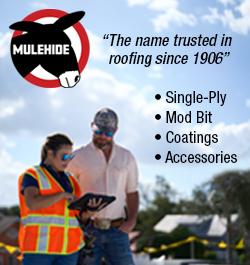



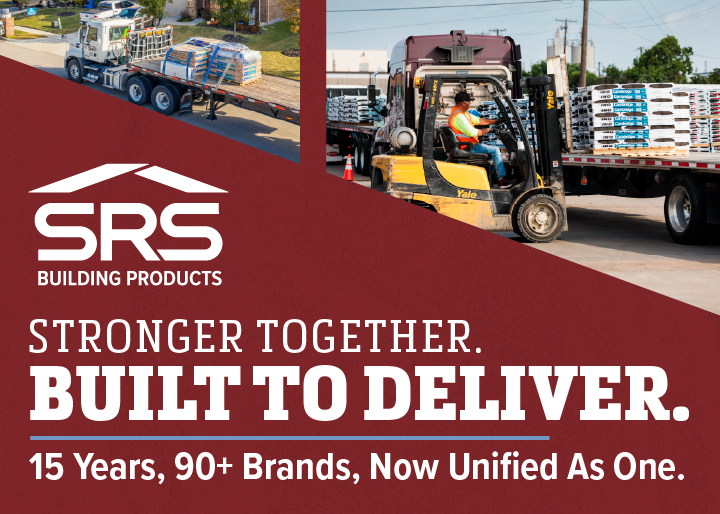
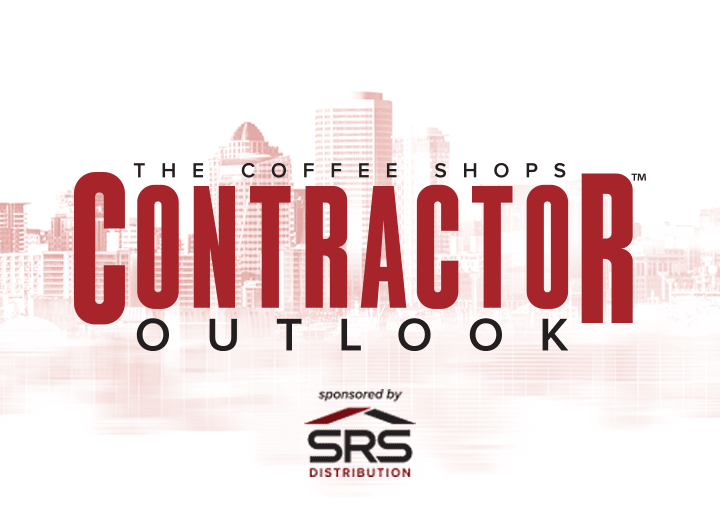

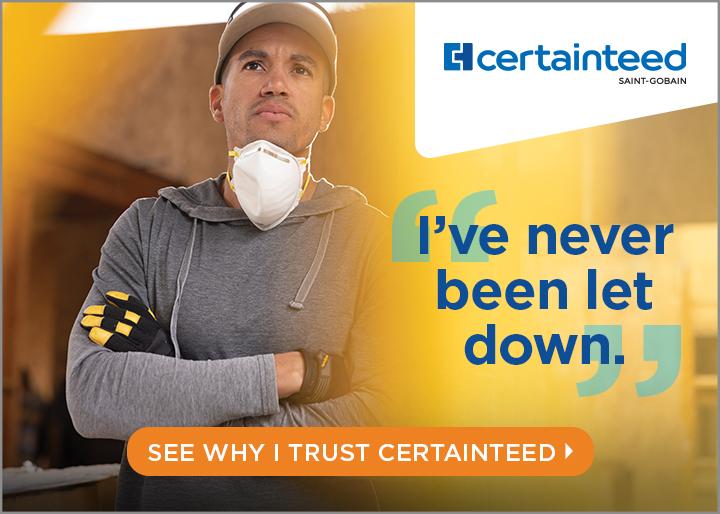
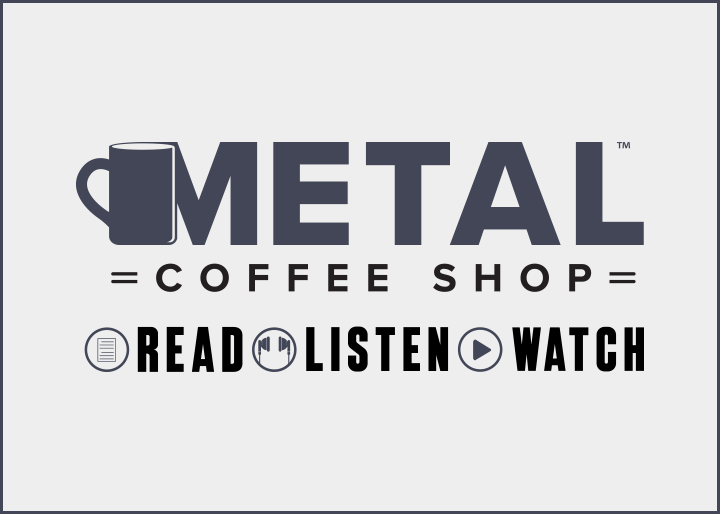

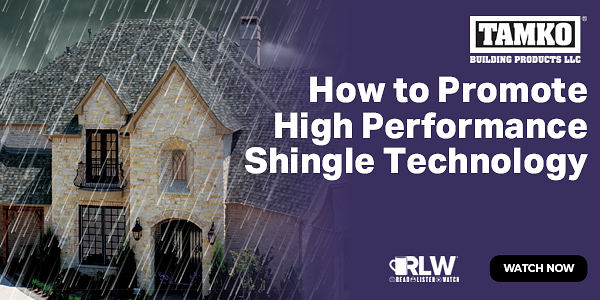
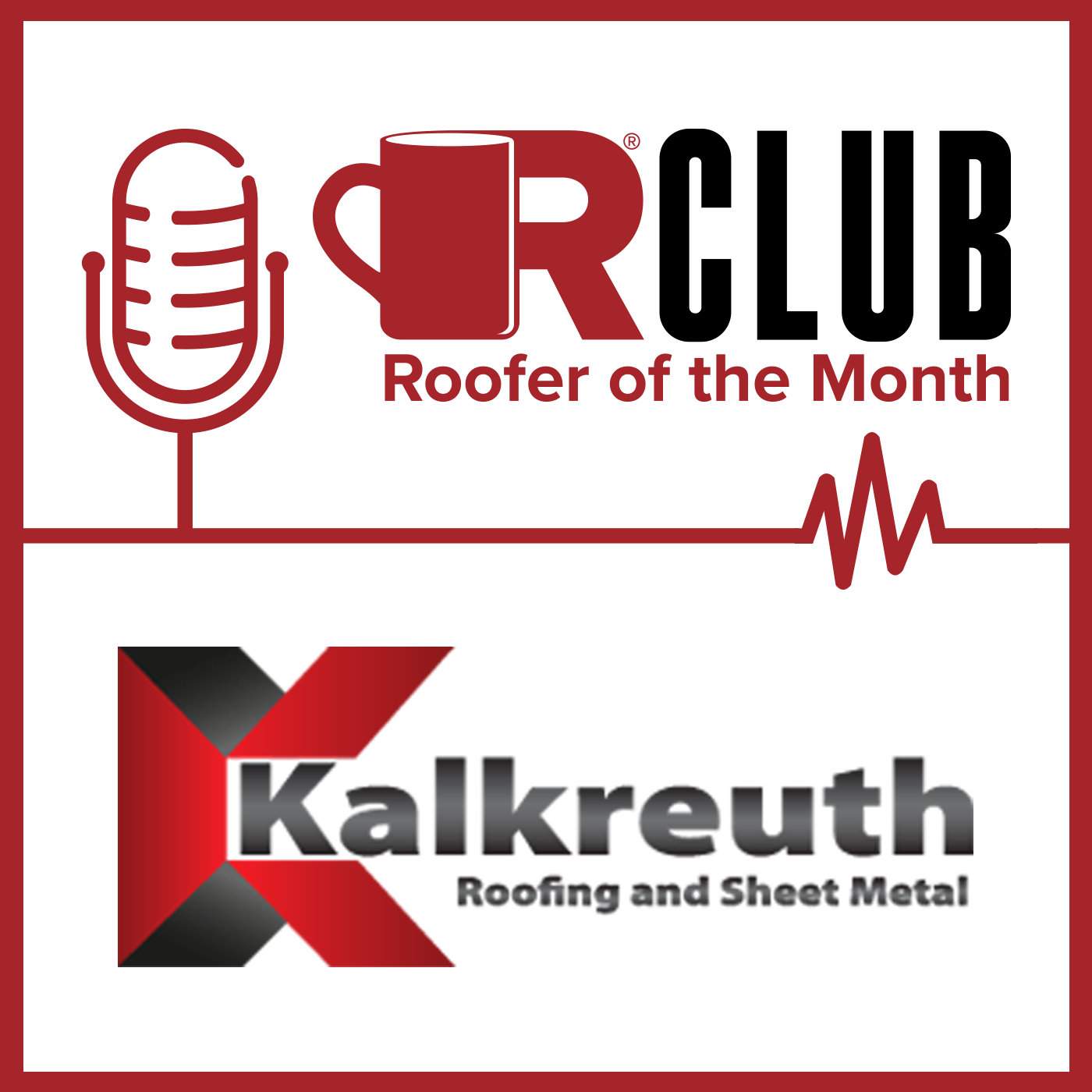
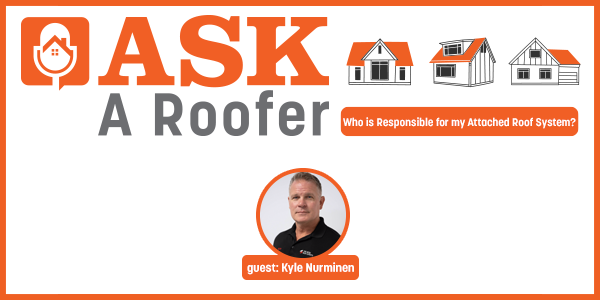
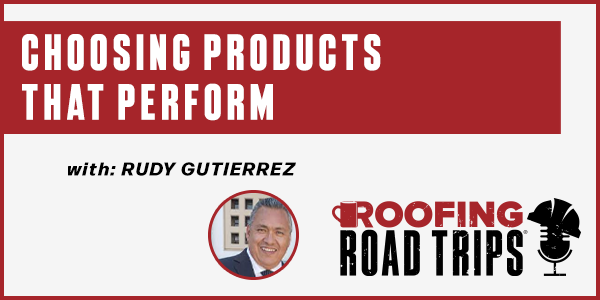

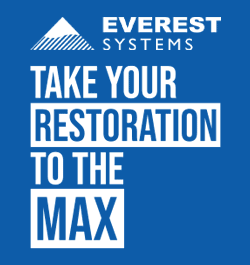



Comments
Leave a Reply
Have an account? Login to leave a comment!
Sign In